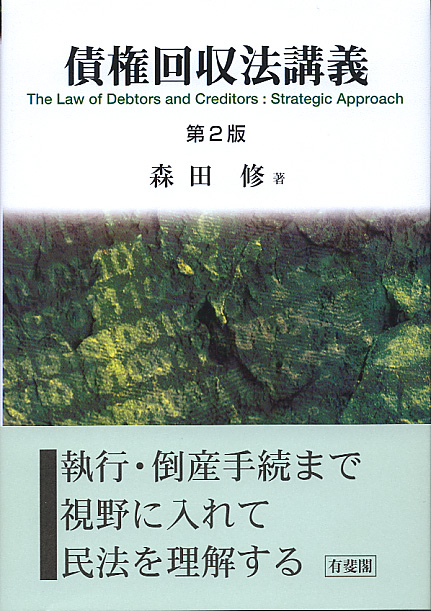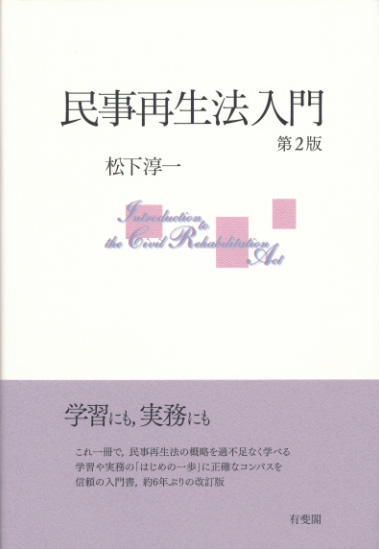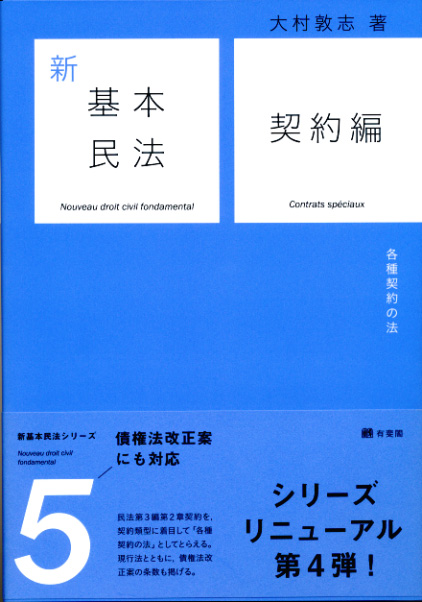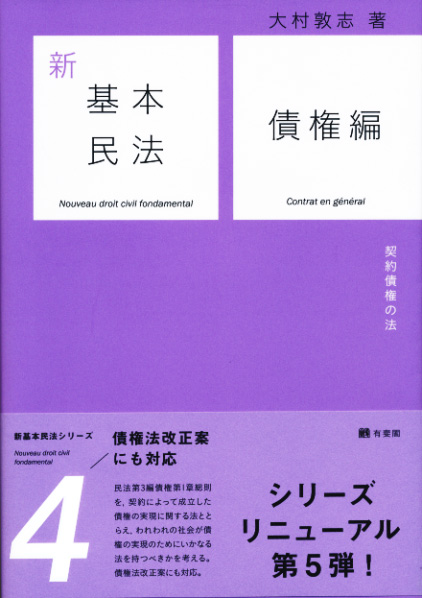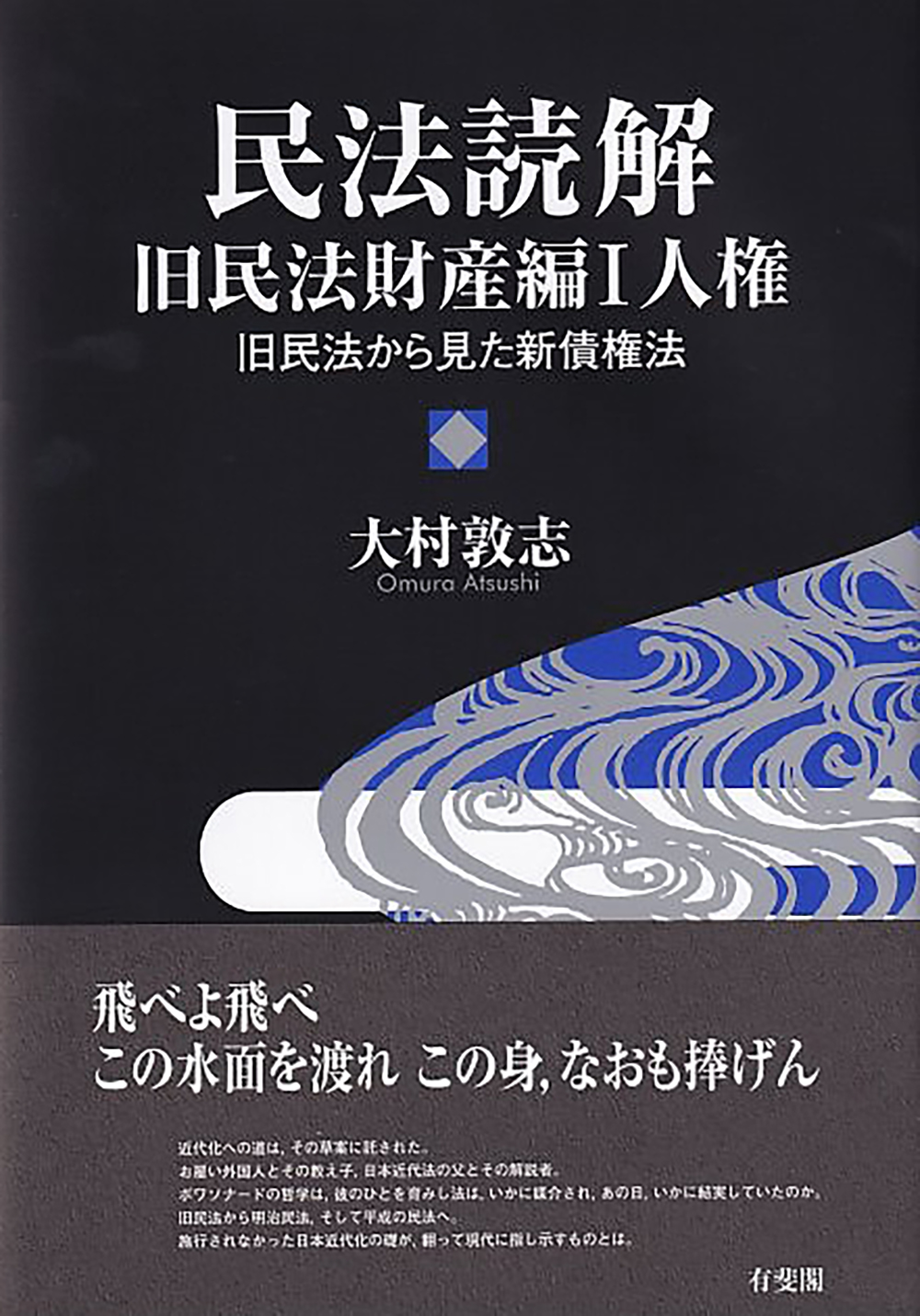
Title
Saiken sōron (General Theory of Obligations [Third Edition])
Size
650 pages, A5 format, hardcover
Language
Japanese
Released
August 27, 2013
ISBN
978-4-00-023052-0
Published by
Iwanami Shoten, Publishers.
Book Info
See Book Availability at Library
Japanese Page
As an academic field, the general theory of obligations examines general rules on obligations stipulated in the Civil Code. It covers matters such as the nature of the validity of claims arising from contracts and from illegal acts, and how they are to be extinguished by means such as realizing their content. It also covers the ways in which claims, debts, and the like are transferred. Given its subject area, the general theory of obligations is often perceived to be abstract and difficult. Yet, at the same time, it is by no means unusual for this general theory to be called upon in resolving emerging issues and constructing new systems—and not only in the courtroom as a matter of course but also in cutting-edge trading practices. While the laws involved might cursorily appear merely technical, they are the product of principles that have been refined over a long course of history and of the thinking of the times and society that produced such regulations lies inherent within them. In engaging with the general theory of obligations, it is necessary on the one hand to closely examine the principles and ideas which lie at its roots and on the other to raise the field’s level of technical precision to render it a legal discipline that is useful to society.
Since around the end of the twentieth century, there has been a lively trend worldwide toward the revision of laws of obligations and contracts, and toward the creation of new ones. In this regard, in Japan also, a large-scale revision of the Civil Code has been in progress. Now that we are right in the middle of these transitions, I felt the need to illustrate the current level of the general theory of obligations in Japan in a readily comprehensible way and so decided to write this book. In doing so, I have examined the meaning and intent of the various laws, and where they are subject to differing interpretations, I have analyzed the causes of such discrepancies—in an attempt, if you will, to dig down further. I have also attempted to broaden our field of view by enquiring about the situation outside Japan and about the historical situation. Another approach I have consciously adopted is advancing the reader’s awareness by examining what kind of concrete differences arise from different ways of thinking. Out of these various approaches, in reading General Theory of Obligations, one comes to understand that there are conflicting viewpoints and gradations in a wide range of relationships: the relationship between obligations and the causes giving rise to them, the relationship between the agreement of the parties involved and factors other than such agreement, the relationship between laws operating during normal times and laws operating upon bankruptcy through debt, the relationship between the claimant’s viewpoint and the debtor’s viewpoint, and others besides. I believe we are called upon today to build an appropriate body of laws in full awareness of these differences. So, in these times of great transition, I have tried to consider what the general theory of obligations will be like in the future.
The simple fact that a bill has been passed does not mean that the revision of the Civil Code has been completed. The interim draft plan on revisions to the Civil Code appended at the end of the book includes several items that have not found their way into the legislative proposals; however, it is not the case that these regulations have been rejected. Rather, they have been entrusted to the development of theory and of precedent. There is a need for further study of both of the laws that have been bills and those that have not, and then, further validation is needed in future.
In General Theory of Obligations, I have attempted to cover these topics as simply and plainly as possible. I believe that the book offers a range of messages—to the beginning student, to the advanced student, and to readers already active as legal practitioners or researchers. I have every hope that this book will be of value to all of them.
(Written by NAKATA Hiroyasu, Professor, Graduate Schools for Law and Politics / 2017)



 Find a book
Find a book






